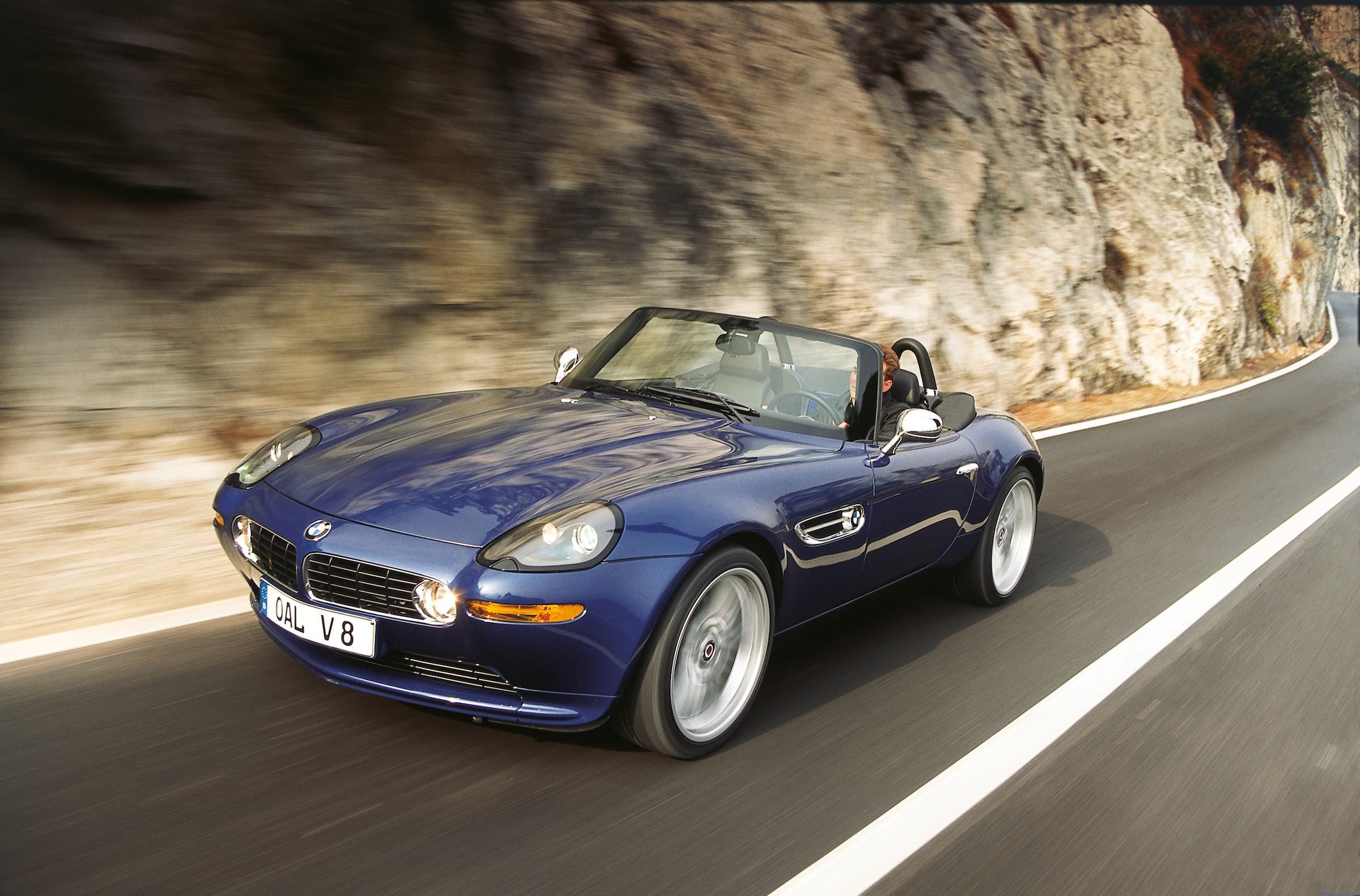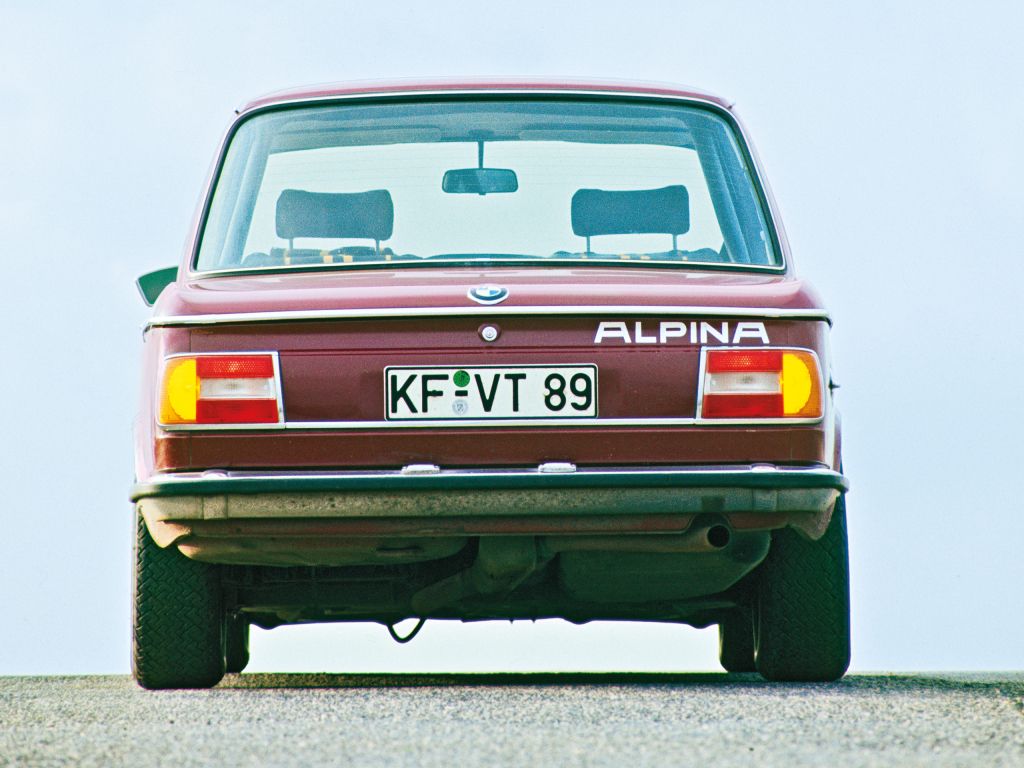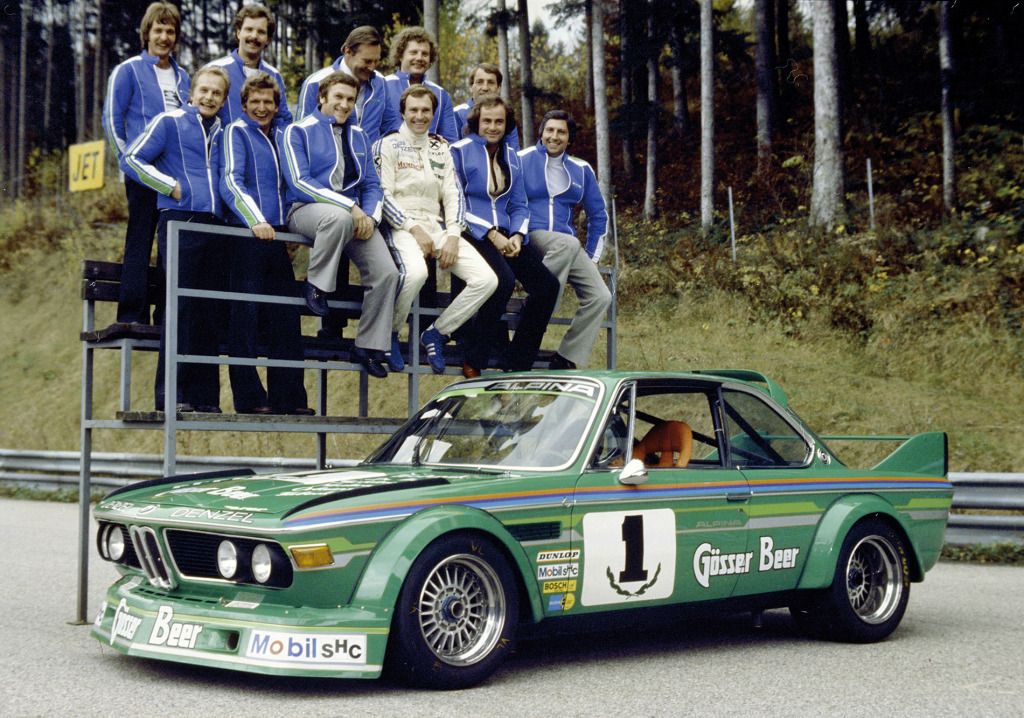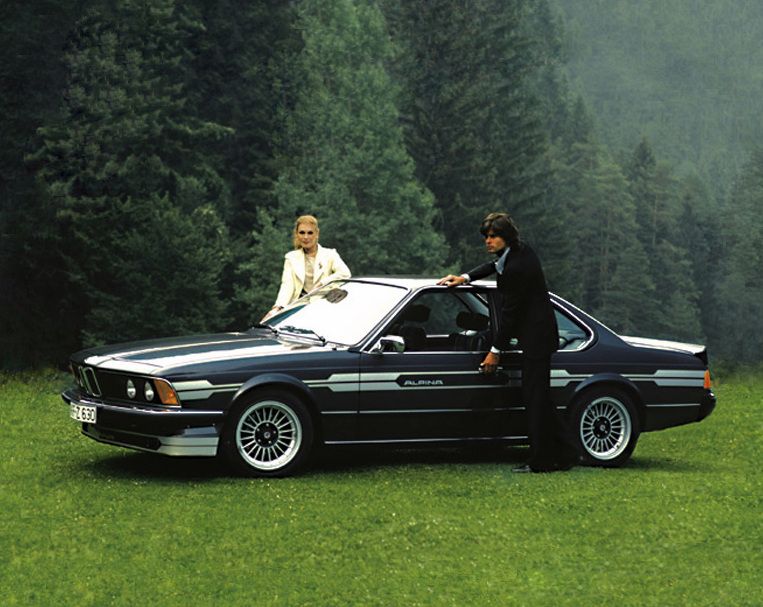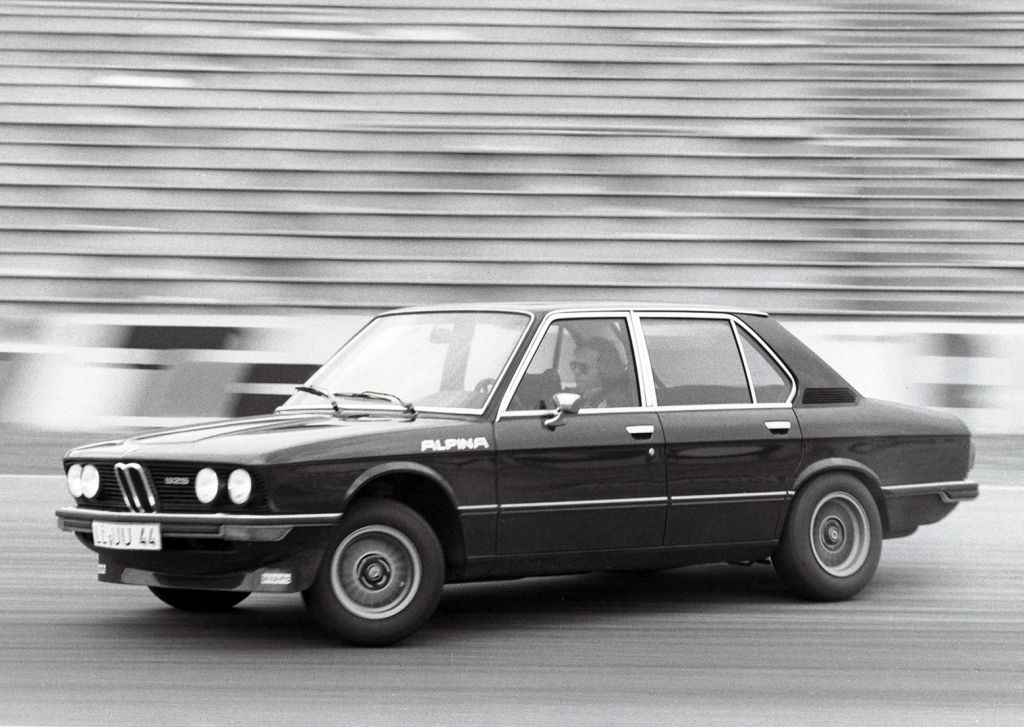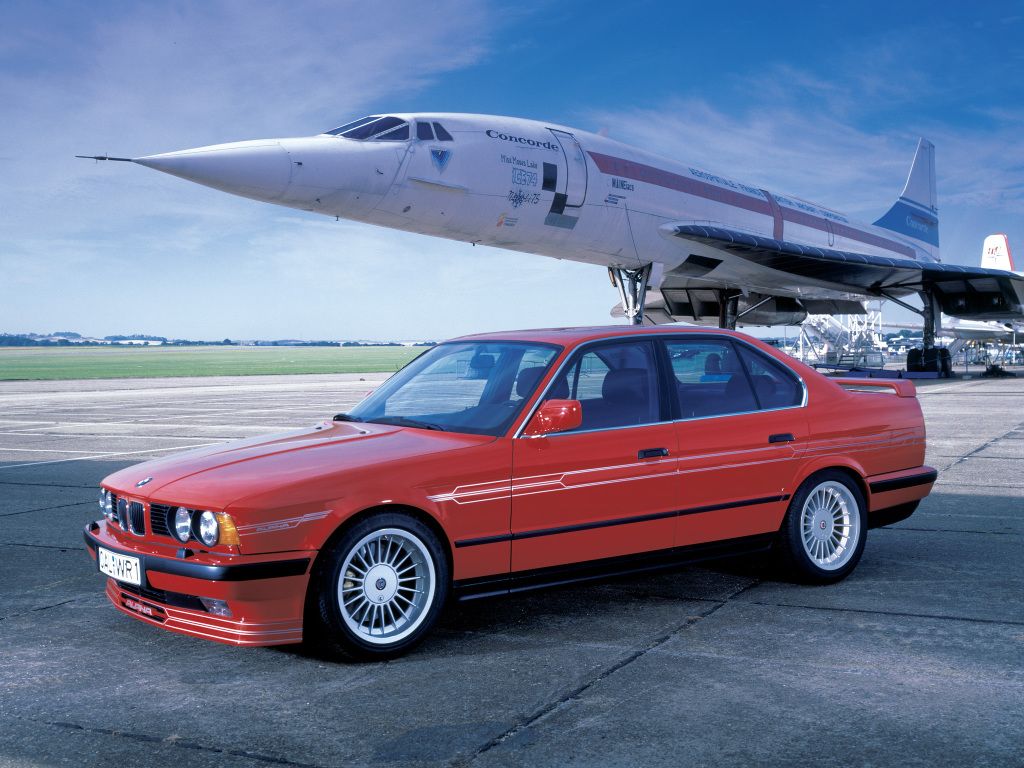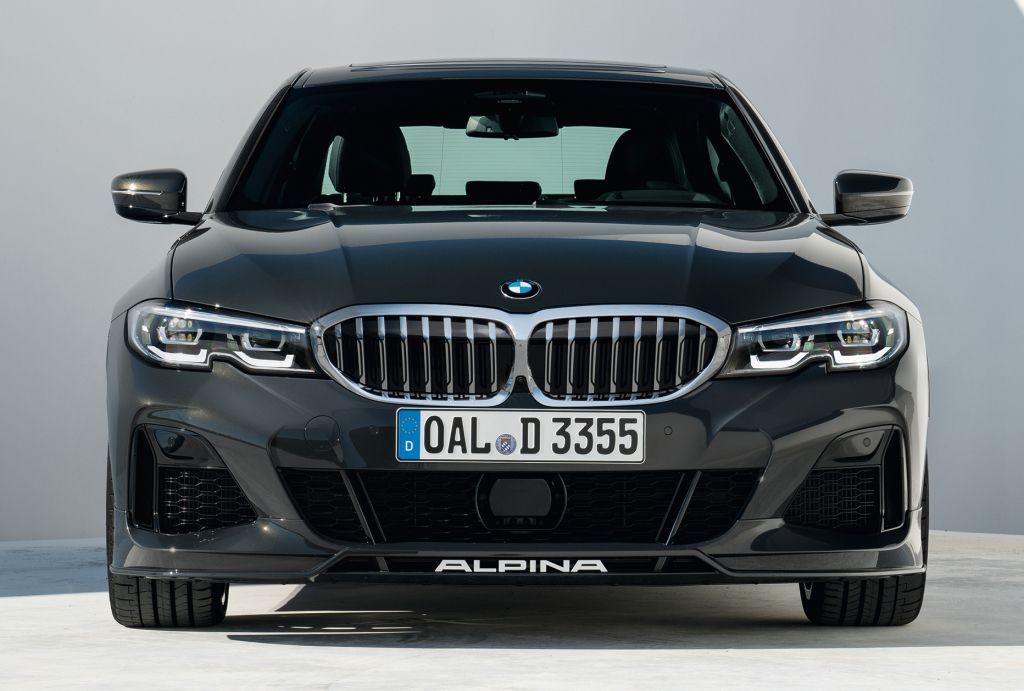The story of Alpina began in 1962, when a young engineering student named Burkard Bovensiepen mounted a Weber dual carburettor to his BMW 1500. The carburettor system was manufactured in Burkard father's precision component factory and the way it changed the performance of the 1500 caught a lot of attention from a lot of people. The rest, as they say, is history.
"From a young age I was interested in cars, and I never had the intention of going into the family business of making typewriters," recalls Bovensiepen in an interview with Classic Driver magazine back in 2015. "I was able to convince my father to let me use a small outbuilding on his business premises, and first I modified my own car, a BMW 1500. There was only one tine Solex carburettor, but it was otherwise a good engine - so I added dual-Weber carbs, which gave it a 0-60 mph time of 13 seconds, three seconds quicker than the base model."
Alpina originally started out as a typewriter manufacturer and then tried to move into textiles without too much success. Burkard Bovensiepen, however, was getting noticed as his tune-ups impressed the era's automotive journalists as well as BMW.
BMW Sales chief Paul G. Hahnemann developed a particular interest in Burkard's work, which in turn lead to BMW's decision to offer full factory guarantee to every BMW vehicle tuned by Alpina. And so, come January 1965, Alpina Burkard Bovensiepen KG company was established in the Bavarian town of Kaufbeuren with eight employees.
Three years later, Alpina goes racing. Between 1968 and 1973, the tuner enjoys a successful era in motorsport, securing the services of famed drivers such as Derek Bell, Harald Ertl, James Hunt, Jacky Ickx, Nikki Lauda, and Hans Stuck along the way. It all culminated in 1970, when Alpina clinched the European Touring Car Championship, the 24 Hours of Spa-Francorchamps, along with other local German competitions.
The ties with BMW get tighter in the early '70s. The carmaker tasks Alpina to design and develop a lightweight version of the 3.0 CS and the 3.0 CSL is born. The Alpina version of the CSL developed 250 horsepower and could go from zero to 100 kph (62 mph) in 6.7 seconds on to a top speed of 243 kph (151 mph). This was possible through the use of forged pistons, three Weber carburettors, a new camshaft, and a custom exhaust system.
Alpina also powers through the 1973 oil crisis without staff layoffs and in 1975, it partners up with select BMW dealers to develop its own network in Germany, along with importers in England and Switzerland, and later on in Japan.
In 1978, Alpina introduces three cars - B6, B7 Turbo, and B7 Turbo Coupe - and they're all fitted with a world-first feature: a fully-electronic, computerized ignition system. Five years later, in 1985, the German Kraftfahrtbundesamt (Ministry of Transport in English) officially recognizes Alpina as an automobile manufacturer.
The best 4-door in the world
That's what car journalist and racing driver Paul Frere wrote about the BMW Alpina B10 BiTurbo in his review for Road & Track. Starting from the pedestrian 535i as the donor car, Alpina worked its way up the performance ladder by completely removing and tearing apart the engine only to rebuilt it after.
Forged pistons were added, as well as remachined combustion chambers, a new camshaft, and twin Garrett T25 turbochargers that offers as much as 11.4 psi of boost. Power? 360 horses at 6,000 rpm. Torque? 384 pound-feet at 4,000 rpm. Crazy? Of course. But not crazier than the fact that 90-percent of all torque was unlocked at 2,500 rpm. For this reason, the standard gearbox had to be replaced by a five-speed aggregate supplied by Getrag, together with a high-friction clutch.
|
Engine |
3.4 L twin-turbocharged BMW M30 I6 |
|
Horsepower |
360 HP @ 6,000 RPM |
|
Torque |
384 LB-FT @ 4,000 RPM |
|
Top Speed |
291 km/h (180 mph) |
|
0–100 km/h |
5.6 seconds |
|
Standing 1⁄4 mile |
13.6 seconds at 107.0 mph |
"In those days, the other tuners only cared about having the most powerful engine; the rest of the car was not very harmonious. With Alpina, it was always the complete package, and remains so today. We designed the cars to be used all year round as daily drivers, but to still have the performance of a weekend sports car," Bovensiepen points out in the same interview with Classic Driver.
And what better example than the B10 BiTurbo? With the engine equation sorted out, Alpina went on to tweak the car in accordance with the newfound grunt.
The suspension was more firm, the spoiler and air dam were actually there for functional purposes, not just for show, and the 17-inch wheels got wider in the back (9.5 inches, compared to 8.5 inches in the front). All this coupled with the extensive mods brought to the engine made the B10 quicker in a standing half-mile than the likes of Ferrari 348, Porsche Carrera 2, and Acura NSX.
In 1990, Alpina had 120 employees and the word-firsts kept coming: in 1992, the company develops an electronic clutch management system (Shift-tronic), then in 1993 it coins the Switch-tronic, which let the driver shift gears using buttons on the back of the steering wheel, a la Formula 1. 1995 is the year Alpina introduces the Supercat, an electrically-heated metal catalytic converter as part of a joint project with BMW.
Cars, however, continue to be at the forefront of Alpina's work. At the 1999 Geneva Motor Show the Alpina D10 BiTurbo makes its debut as the most powerful diesel saloon in the world. In 2002, Alpina launches the Roadster V8 based on BMW's Z8 roadster, then the performance car charge continues with the B7 (featuring a mechanically-driven radial compressor), the B5 - considered by many the spiritual successor of the B10 BiTurbo, and the B3.
As it looks to keep up with the trends, Alpina launches the XD3, its first SUV built, of course, on the bones of the BMW X3. The XD3 would pave the way for the more recent S and the XB7 SUVs.
Looking back at Alpina's work - which now stretches over more than 50 years, there's only one word that could sum it all up: continuity. The company has always kept its path and never went astray from developing subtly-restyled cars that fill the performance gap in those areas where BMW wouldn't or couldn't deliver.
Today, Alpina delivers about 1,700 cars every year. Not bad, considering it all started with a young man who only wanted to make his BMW faster.

